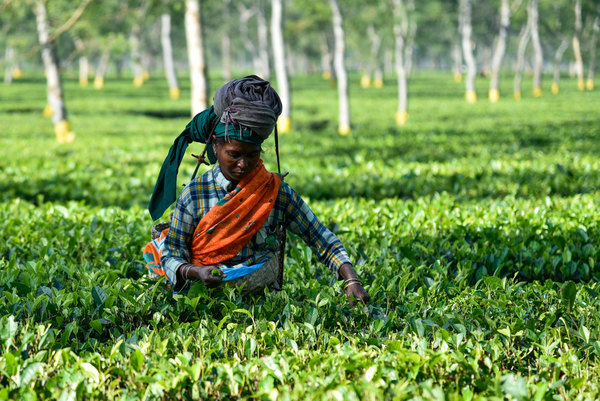Polarized thought
After spotting a Grist Magazine article about a climate change-induced human rights claim, and then a story last week from Scientific American about International Polar Year, I thought it was time to mention the effect of global warming on humans. The human climate change link is not often considered, but Inuit people launched a human…
A Role for Rice in Causing and Tackling Climate Change?
Rice provides the staple food for around 2 billion people, and demand is forecast to grow at 1% a year, with no increase in land available. Some recent studies have indicated that rice production is contributing to climate change through emissions of greenhouse gases (GHG). An analysis by Reiner Wassmann, Klaus Butterbach-Bahl and Achim Dobermann…
Grassland invaders had inside help
One of the key factors in an alien species becoming invasive in an area is that it survives better in the new habitat than the native species, right? Well it’s not always quite that simple. Researchers from Oregon State University have documented a case where stronger native grasses were out-competed and replaced by inferior challengers.…
Fat, me?
According to a study published in Cell Metabolism, the brain circuitry of obese mice is in denial about the state of the rest of the mouse’s body. While this may also be true of the conscious brains of many overweight or obese human subjects, research hasn’t yet extended this far, except in the numerous body…
“Sustainable Aquaculture” – challenges for a growing industry
On 27 February at Aquaculture 2007, the Trienniel Meeting of the World Aquaculture Society, National Shellfisheris Society and American Fisheries Society – Fish Culture Section, the Plenary Lecture was given by Dr Jason Clay of the World Wildlife Fund. The theme was how the WWF is acting to promote sustainable food production, focusing on aquaculture.…
USDA Support For GM Rice With Human Genes
The US Department of Agriculture is allowing Ventria Bioscience to go ahead with field-scale cultivation of rice containing human genes that can be used to help fight diarrhoea. The company has introduced human genes into rice that encode lactoferrin and lysozyme, two proteins found naturally in breast milk. Ventria recently reported a Journal of Pediatric…
How Safe Is Making Drugs in GM Plants?
Transgenic plants offer a route to making some pharmaceuticals cheaply and effectively, but concerns have been raised that they could pose risks too. Jeff Wolt and his colleagues at Iowa State University argue that the consequences of intended and unintended use both must be considered and managed to understand the risks of such plant-made pharmaceutical…
Frog fungus
At the risk of developing a ‘save the animals’ theme, and despite saying last week that moving species around may not be a good idea, I’m now advocating the adoption of frogs by zoos, aquaria and botanic gardens. This is, however, to promote an ex situ conservation programme to slow amphibian extinction in the crisis…
Rebuilding a Brazilian rainforest
The Brazilian Atlantic rainforest once spanned in excess of a million square kilometres. However, nowadays it barely covers 7% of that. The deforestation that has occurred has left farmers and wildlife with failing springs, receding groundwater and destroyed habitats. An ambitious project in Brazil’s most crowded state, São Paulo, aims to bring the rainforest and…
Is circumcision the answer to HIV?
Two randomised controlled trials from Kenya and Uganda reported in the Lancet this week have shown that circumcising men can halve the HIV infection rate. This is great news for controlling HIV, confirming what has been suspected for years. The operation is cheap and simple to carry out and just has to be done once.…


